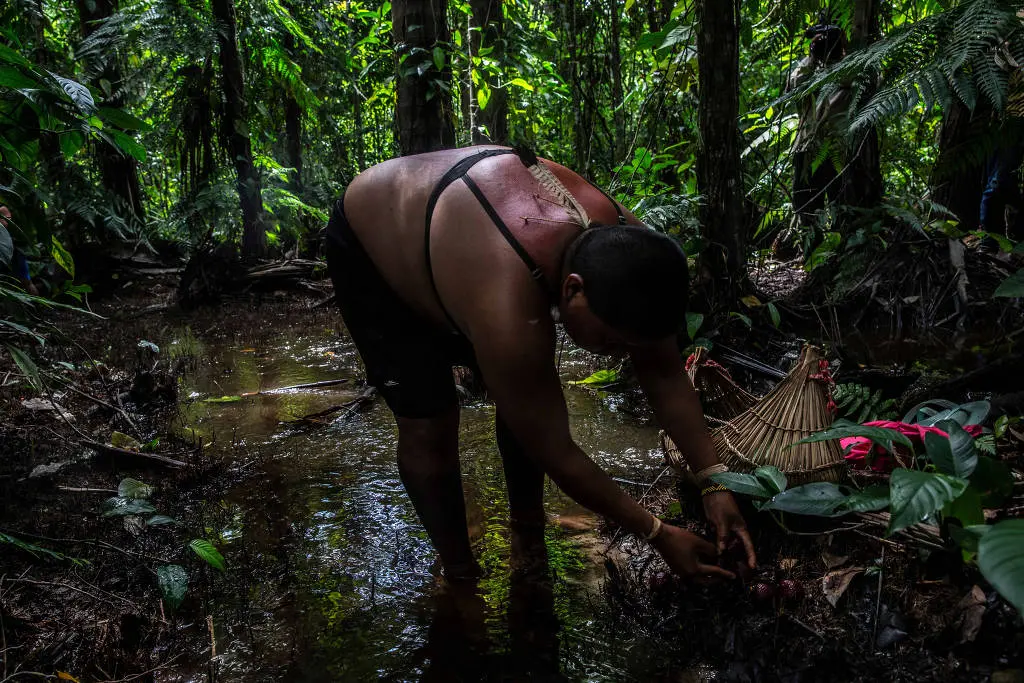This story excerpt was translated from Portuguese. To read the original story in full, visit Folha De S.Paulo. You may also view the original story on the Rainforest Journalism Fund website here. Our website is available in English, Spanish, bahasa Indonesia, French, and Portuguese.

On a muggy morning last December, eight women and their cacique left the Ripá Xavante Indigenous village, in the Pimentel Barbosa Indigenous Land, aboard a truck. After a few kilometers, at the end of the road, they began a single file walk along almost imperceptible trails, hidden under the grass that reached their knees.
Little shade came from the thin, low, twisted trees. "It is the love we feel for the plants, for their fruits and seeds, that makes us walk under the burning sun without complaining," says Neusa Rehim'Watsi'õ Xavante, the chief's daughter.
Most of the approximately 20,000 Xavantes live in the cerrado in Mato Grosso, a mosaic of forest and pasture, conservation and deforestation, which covers 40% of the state. Although drier and less dense than the Amazon rainforest, the cerrado has exuberant and unique fauna and flora.
To view the photo gallery in full, please visit: https://www1.folha.uol.com.br/ambiente/2022/06/indigenas-xavantes-recolhem-sementes-para-restaurar-o-cerrado.shtml

As a nonprofit journalism organization, we depend on your support to fund journalism covering underreported issues around the world. Donate any amount today to become a Pulitzer Center Champion and receive exclusive benefits!










